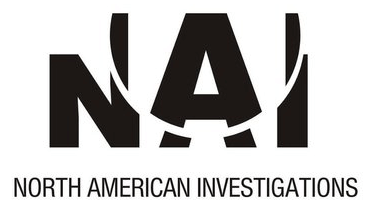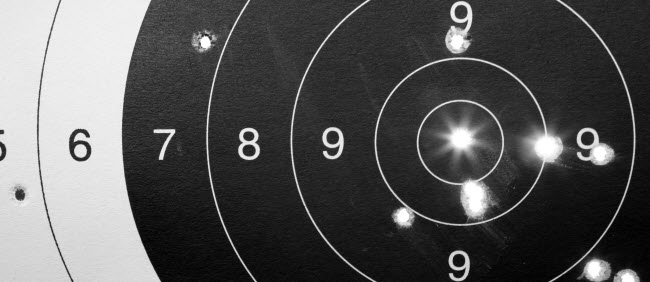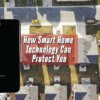In the early weeks of May 2013, the battle on gun control took a radical turn. A group known as Defense Distributed made the world’s very first gun using almost nothing but a 3D printer. The parts of the gun were cast from resins and polymer. It wasn’t the world’s finest firearm, but it offered the basics: it could be fired. And it could be fired to kill.
The gun was called the “Liberator,” an obvious reference to the group’s vision, which is aimed at
“defending the civil liberties of people’s access to arms.” The current creation is unlikely to trigger the widespread mass production of guns, but it suggests that the balance in gun availability may be changing very soon.
The Ethical Question?
Should people have easy access to guns? The nation has wrestled for many decades with this question. Proponents of the issue have pointed to their legal rights, which allow them to bear arms for their personal protection. However, the growing number of public shootings happening around the country has led others to call for the enforcement of stiffer gun laws.
While the debate about the 3D pirate gun is still going, the government has already taken steps towards limiting who has access to the new resin gun. Cody Wilson, the founder of Liberator was ordered to remove the schematics of the weapon from his site, on the grounds that he was violating a U.S arms export law.
However, before Wilson could remove the designs, they were downloaded over a 100,000 times. They were also uploaded to popular file-sharing sites such as Piratebay and Mega. The site may be down, but the plans are now out there, in cyber space. Getting them back will be virtually impossible.
The Stealth Gun
The Liberator is not just a gun. It is also an effective stealth weapon. Because most of the necessary parts can be created with a 3D printer using non-metal components, the gun is capable of evading metal detectors, which would make carrying it illegal.
To counter this, the producers added a chunk of steel into the gun. Remove this, and the gun becomes invisible to metal detectors. The Liberator is also incredibly affordable. According to the designer, the gun costs roughly $5 to build (assuming you already have a 3D printer). With no registration, zero waiting time and no serials, the liberator could quickly become a thorn in the side of law enforcement officials.
Another significant risk to the adoption of 3D printed guns is that it is almost impossible for the government to regulate their production. In theory, DRMs could be built into the 3D printers which prevents them from manufacturing certain designs (similar to the technology that prevents digital scanners from scanning currency), but such restrictions can be hacked or circumnavigated. The best that the government could do would be to simply ban the use of the guns, while hoping for the best.
3D Guns
Defense Distributed aren’t the only ones who have successfully manufactured parts of a gun using a 3D printer. A few months before, another gunsmith announced that he had successfully printed the lower receiver of a modular assault rifle using a 3D printer.
The idea of building your own gun at home isn’t particularly new. Ever since the first gun was invented, people have been able to successfully create their own home versions. That is because the principle behind a gun’s technology is not as complex as some might think. All you need is a bullet lined in a tube and a force strong enough to send it shooting out – a problem that can be solved using everything from pressure cans to elastic bands.
In the mid-1950s, street wars were fought using zip guns. Some of these were crude, while others were more refined. Nevertheless, they got the job done. The current laws of the country already permit people to build their own firearms, provided they aren’t being produced for sale and are limited to personal use. A 3D gun would fall in that category.
So what does this mean for the safety of private investigators? It is hard to say. Just like the birth of the internet, there are likely to be both good and bad outcomes. It is safe to say that some people will seize the opportunity of 3D guns to launch attacks.
But will this be enough for the government to ban the technology? It is more a question of the man and less about the system. For example, there are signs that the Tsarnaev brothers got the instructions on how to build the pressure bombs the used in the Boston Marathon bombings using the web. However, shutting down the web just because of people like the Tsarnaev brothers would be considered harsh by even the most stringent of observers.
So yes, the option of printing your own gun will be used in different ways by different people. What is, however, likely to occur is that private investigators and law enforcement agents will become a lot more careful around suspects – particularly those with a history of violence.
Another possible downside to the 3D printed guns is that their increased adoption will end up making it harder for law enforcement officials to build weapons profiles or to track down suspects. Since these guns can be essentially built within a garage, criminals may be able to skip the gun store or local black market when hunting for a weapon, leaving PIs and officers of the law without any serial numbers or registration information.
The Bottom Line
The fight against the 3D gun (as well as the idea of “wiki-weaponry”) is well underway. Most government agencies are looking for ways of staving off their use. It is worth noting that, although the Liberator was created using a 3D printer, it is still a long way from being an effective weapon. Its accuracy isn’t very sharp and there is the serious risk that it may end up blowing up in your face.
But if modern engineering has shown anything, it is that very few first models start out great. The most significant part is getting that initial step – and it appears that has begun.




